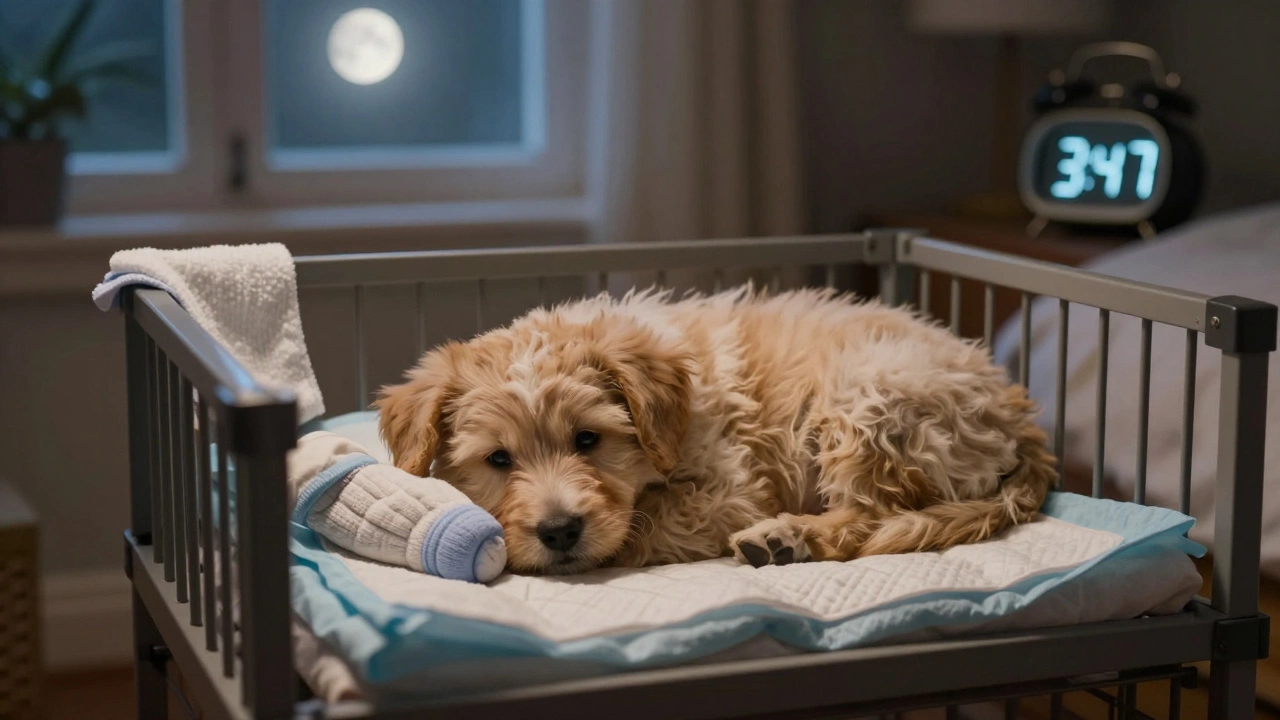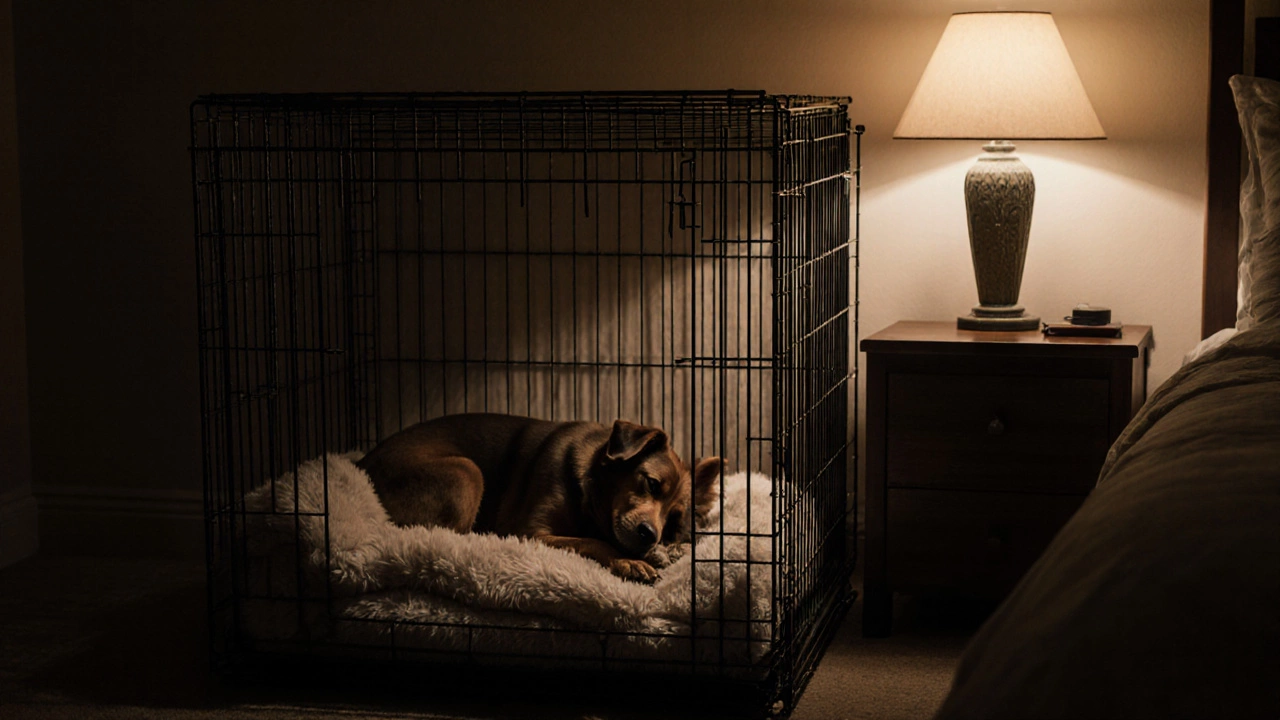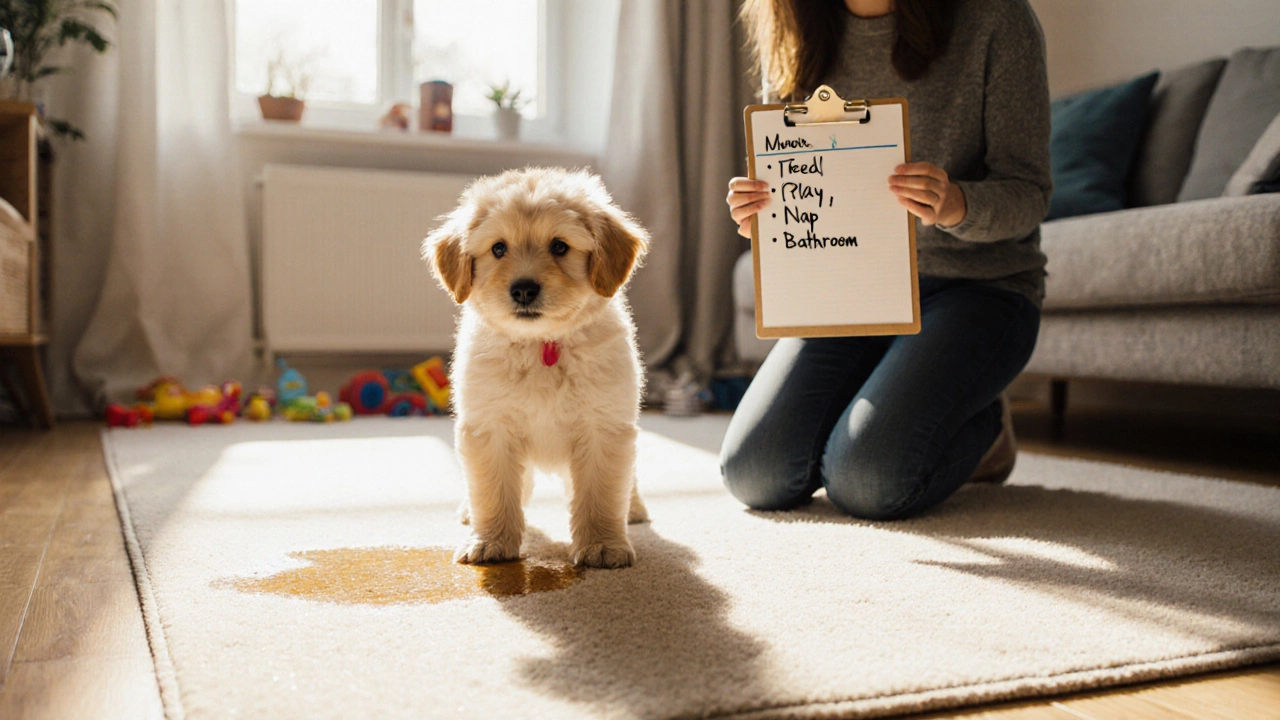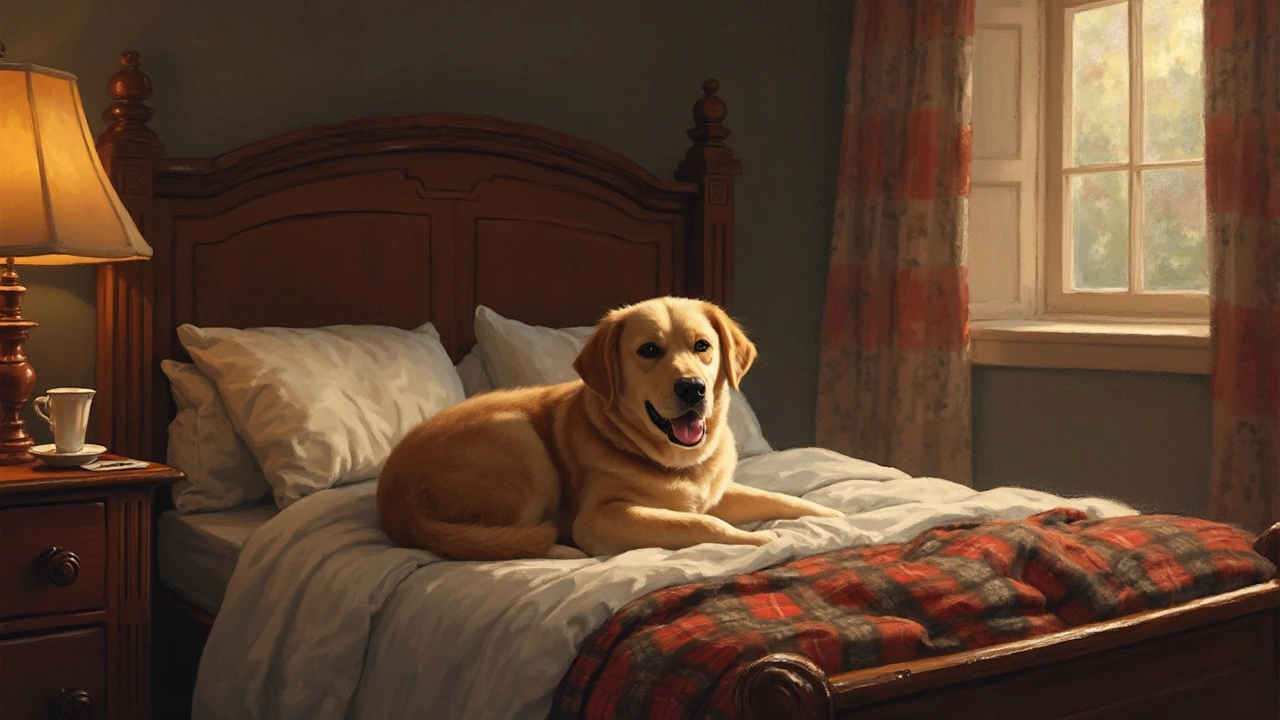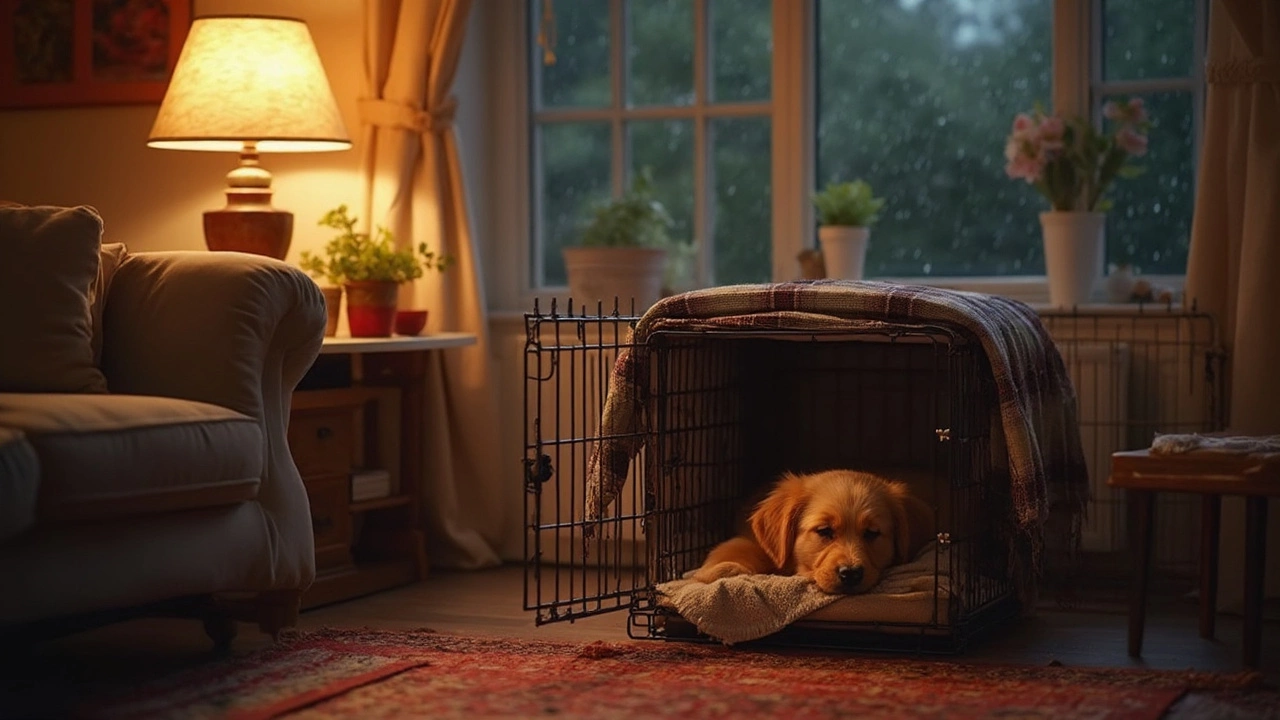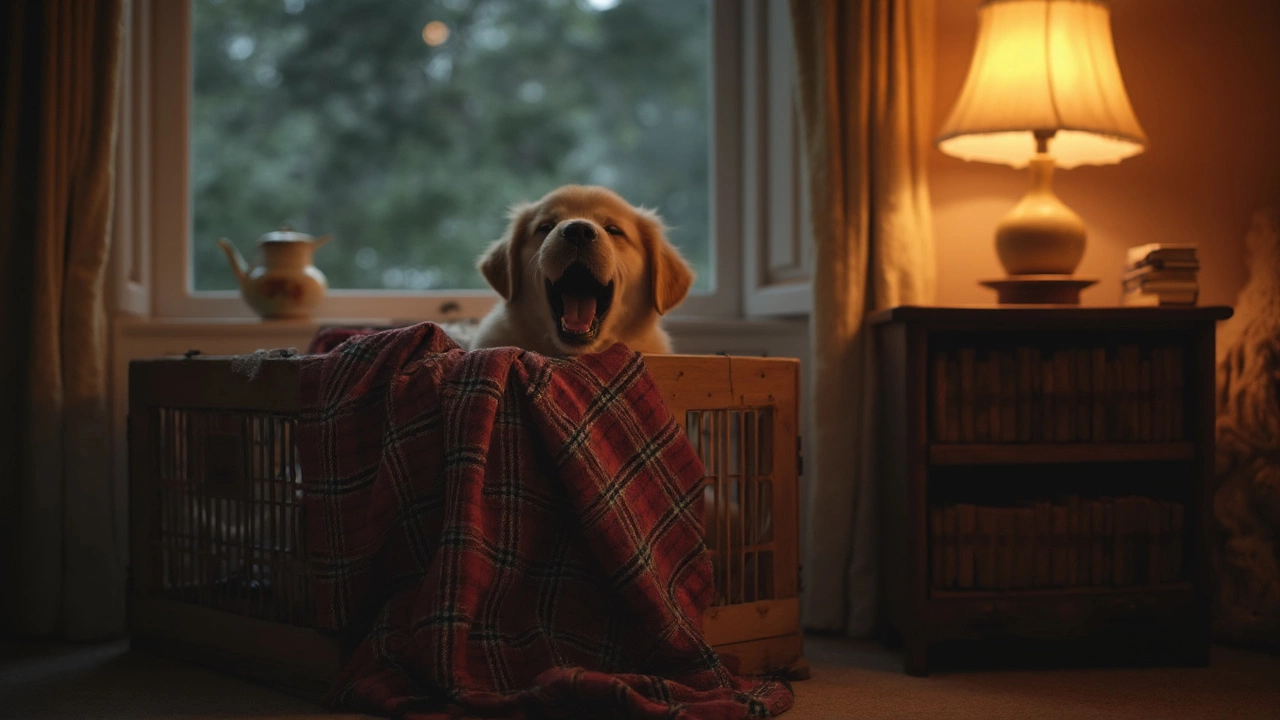Crate Training Made Simple: Practical Tips for Every Dog Owner
If you’ve ever wondered how to turn a plain crate into a cozy, safe zone for your pup, you’re in the right place. Crate training isn’t magic – it’s a series of small steps that build confidence for both you and your dog. Below you’ll find clear, down‑to‑earth guidance that works whether you’re dealing with a tiny teething puppy or a calm adult dog.
Night‑Time Crate Set‑Up: Keep It Comfortable and Dry
First nights are the toughest. A common question is whether to use a pee pad inside the crate. The short answer: skip the pad for most puppies. A pad can confuse their bathroom cues and delay learning to hold it until morning. Instead, place a soft blanket or a crate pad that’s easy to wash. If your puppy does have accidents, clean the crate with an enzymatic cleaner to erase scent clues.
Position the crate in a quiet corner but close enough that you can hear any whines. A low‑level white noise or a ticking clock can soothe a nervous pup. Keep the crate size just right – big enough for a dog to stand, turn, and lie down, but not so large that they can use one corner as a bathroom.
Daytime Crate Use: Safety, Comfort, and Routine
During the day, the crate becomes a safe retreat, not a punishment. Offer a chew toy or a frozen Kong stuffed with peanut butter to keep them occupied. If you’re away for a few hours, place the crate near a window so they can see outside – visual stimulation helps prevent boredom.
Never leave a dog in a crate for more than four to six hours at a time. Adult dogs can hold it longer, but puppies need frequent breaks. A quick schedule might look like: crate → bathroom break → play → crate → repeat. Sticking to this routine trains your dog to associate the crate with calm breaks rather than endless confinement.
When you introduce the crate, make it inviting. Toss in a treat, praise loudly, and let the dog explore at their own pace. Avoid forcing them inside; that creates fear. A few short sessions a day, each ending with a reward, will turn the crate into a favorite spot.
Beyond the basics, consider the gear you use. A sturdy, well‑ventilated crate with a secure latch is worth the investment. Look for a crate that’s easy to clean and has a removable tray for quick mess handling. Many customers on our site rave about crates that combine durability with a comfortable interior – perfect for both training and travel.Remember, crate training isn’t a one‑size‑fits‑all solution. Some dogs may need a few extra days to adjust, while others take to it instantly. Stay patient, keep the tone positive, and celebrate each small win. In time, the crate becomes a safe harbor that your dog willingly returns to, whether you’re at home or on the road.
Ready to start? Browse our selection of top‑rated crates and accessories, then follow the steps above. You’ll soon see a calmer, happier pup who knows exactly where to go when it’s time to rest or relax.
Can an 8-Week-Old Puppy Stay in a Crate All Night?
An 8-week-old puppy can't sleep through the night without needing to go outside. Learn how to set up a safe, realistic overnight routine that supports their development and builds trust.
Dog Crate vs Bed: Which Is Best for Your Dog’s Sleep?
Explore the pros and cons of dog crates vs beds, learn how to match them to your pet’s needs, and get practical tips for a safe, comfortable night’s sleep.
Stop Puppy Peeing Inside: Proven House‑breaking Tips
Learn step‑by‑step how to stop a puppy from peeing and pooping indoors with routines, crate training, pee pads, and clean‑up tips.
Best Places for Dogs to Sleep at Night: Beds, Crates, or Co-sleeping?
Not sure if your dog should sleep in your bed, their own bed, or a crate? Check what science says, get useful tips, and find the coziest idea for every pup.
Should I Cover My Puppies' Crate at Night? Real Answers for New Owners
Debating whether to cover your puppy’s crate at night? Discover the real reasons some owners (and puppies) rest easier with a cover and why it’s not a must for every pup. This article explains the science, perks, and practical tips behind crate covers. If you've googled late at night about whining pups or restless sleep, you’re in the right place. Get straight talk, not just generic advice.
Should You Cover Your Dog Crate with a Blanket at Night?
Wondering if you should toss a blanket over your dog's crate at night? This article lays out when covering a crate is helpful, when it's not, and what to watch for. You'll learn how a simple blanket can calm some pups and stress out others, plus tips to keep your dog safe. Find out how to make nighttime cozier or less scary for your puppy without causing problems.
